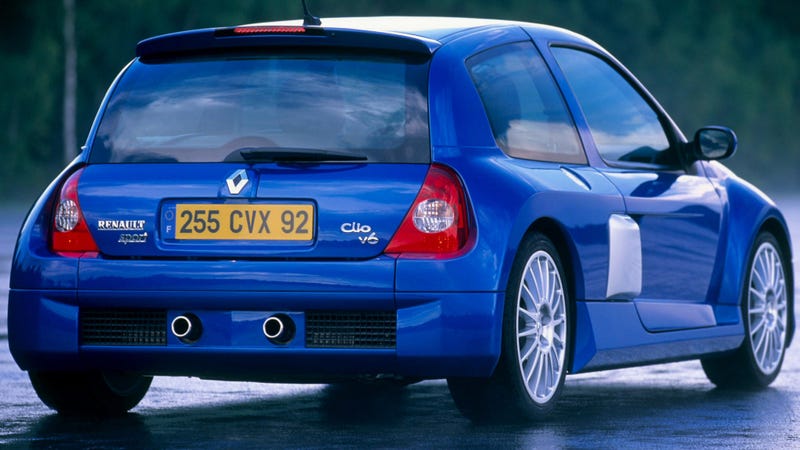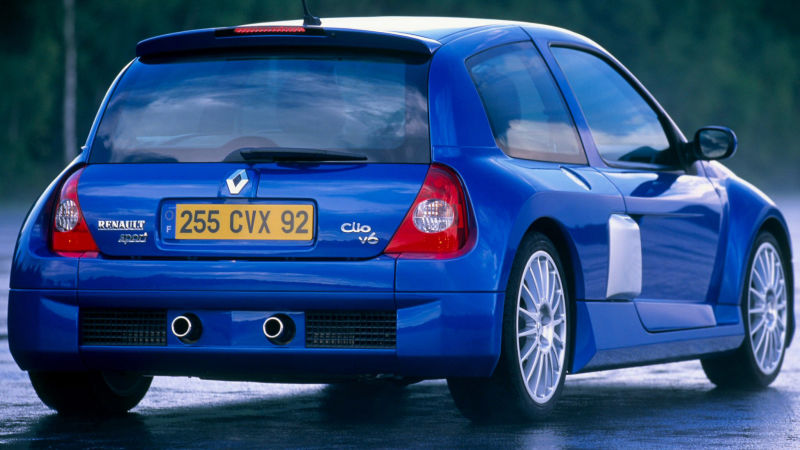
What’s funny about the Renault Clio V6, even this later version with a higher-spec engine, is that it only makes 255 horsepower and 221 lb-ft of torque (as noted by EVO at the time, from a 3.0-liter mounted where the back seats ought to be.
It gives me a sinking feeling that this would be remarkably easy to do today.

That mid-2000s era V6 power figure is something easily achieved by turbo four-cylinders in 2019, and the problems of packaging and weight wouldn’t be nearly so bad.

Advertisement
Harry Metcalfe, who ran EVO back when, just put a later “Phase 2” Clio V6 to test, finding that it was about 650 pounds (around 300 kilos) heavier than a front-engine Clio Trophy hot hatch of the same era. (Metcalfe measured 1,361 vs 1,072 kilos respectively, though we don’t know if the gas tanks were just as full, and so on.)
Packaging was also an issue. The Clio got a (not totally waterproofed) frunk, but only a letterbox rear cargo area. A smaller four-cylinder would make this an easier gig.
Advertisement
The only reason why I care about any of this is that the Clio V6, as Metcalfe notes, drives spectacularly. It’s good enough to match its mini-exotic looks from the outside, and general sense of absurdity. It also wasn’t hideously expensive, coming in at £26,995, per EVO, or right around what a Nissan 350Z ran you at the time.

Advertisement
Renault did mid-engine hatchbacks before this, the Renault 5 Turbo and Turbo 2.
We deserve them again.













